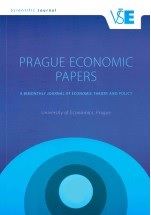Location of Unwanted Facilities in Prague: NIMBY in Public Administration Hierarchy
Location of Unwanted Facilities in Prague: NIMBY in Public Administration Hierarchy
Author(s): Martin Dlouhý, Tomáš HudečekSubject(s): Economy
Published by: Vysoká škola ekonomická v Praze
Keywords: NIMBY; LULUs; Prague; public administration; negative externality
Summary/Abstract: The paper investigates how the problem of NIMBY (Not-In-My-Back-Yard) related to the location of unwanted facilities is dealt in a hierarchically organized city. The conventional view of NIMBY is based on two premises: first, that locally unwanted facilities are essential to achieve an important societal benefit and realize the public good; second, that selfish opposition of local community prevents the realization of that societal good. The NIMBY effect is studied as a conflict between the City of Prague and its city districts. The official documents of the Prague City Council and of the Prague City Assembly were searched to find examples of decisions on the location of unwanted facilities. The documents search was concentrated on five selected facilities: municipal waste dumps, services for the homeless, services for drug users, regulation of gambling facilities, and the system of parking zones. In the documents, the authors identified five types of approaches to NIMBY that are called financial compensation, fair distribution, local autonomy, gradual problem shifting, and consultation/cooperation. It was observed that city districts, lower level of public administration, behave as guardians of local interests if they communicate with a higher level of public administration, a guardian of global interests. As local politicians depend on their local voters, it is not surprising that they prefer local interests to global ones. This naturally creates an internal policy conflict in the city that is divided into smaller units.
Journal: Prague Economic Papers
- Issue Year: 26/2017
- Issue No: 2
- Page Range: 240-252
- Page Count: 13
- Language: English

